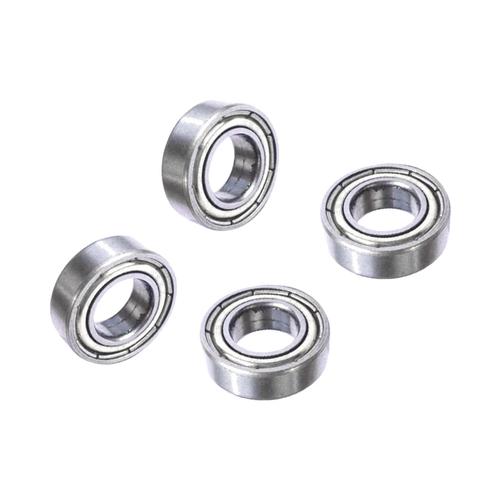Comprehensive Guide to Ball Bearings: Types, Applications, and Maintenance Tips
Ball bearings are precision-engineered components designed to reduce rotational friction and support radial or axial loads in machinery. They consist of rolling elements enclosed between inner and outer rings, enabling smooth motion with minimal energy loss. Widely used in automotive, aerospace, and industrial equipment, ball bearings enhance operational efficiency and durability.
Table of Contents
1. Types of Ball Bearings2. Ball Bearing Applications
3. How to Maintain Ball Bearings
4. Ball Bearing Selection Guide
5. Ball Bearing Manufacturers
1. Types of Ball Bearings

Ball bearings come in various designs tailored to specific applications. Deep groove ball bearings handle radial and axial loads, making them ideal for electric motors. Angular contact bearings manage combined loads at high speeds, commonly used in gearboxes. Thrust ball bearings specialize in axial load support, while self-aligning bearings compensate for shaft misalignment. Hybrid ceramic bearings, with ceramic rolling elements, offer superior heat resistance and longevity in extreme conditions. Understanding these types ensures optimal performance in machinery.
2. Ball Bearing Applications
Ball bearings are integral to countless industries. In automotive systems, they reduce friction in wheel hubs and transmissions. Aerospace applications rely on precision bearings for turbine engines and flight control systems. Industrial machinery uses bearings in pumps, conveyors, and robotics. Even consumer products like bicycles and household appliances depend on ball bearings for smooth operation. Their versatility stems from their ability to minimize wear and enhance energy efficiency across diverse environments.
3. How to Maintain Ball Bearings
Proper maintenance extends ball bearing lifespan. Regular lubrication reduces friction and prevents corrosion; use grease or oil compatible with operating temperatures. Monitor for unusual noise or vibration, which indicate wear or misalignment. Clean bearings periodically to remove contaminants using solvent baths and lint-free cloths. Avoid over-tightening during installation to prevent deformation. For sealed bearings, check seals for damage to ensure debris exclusion. Implementing these practices minimizes downtime and costly replacements.
4. Ball Bearing Selection Guide
Selecting the right ball bearing requires evaluating load capacity, speed, and environmental factors. Radial loads demand deep groove bearings, while axial loads suit thrust designs. High-speed applications need precision bearings with low friction coefficients. Consider material: stainless steel resists corrosion, while ceramic handles extreme temperatures. Lubrication type matters—oil for high speeds, grease for longevity. Always consult load ratings and alignment tolerances in manufacturer datasheets to ensure compatibility with your machinery’s requirements.
5. Ball Bearing Manufacturers
Choosing reputable manufacturers guarantees quality and reliability. Leading brands like SKF, NSK, and Timken offer ISO-certified bearings with rigorous testing protocols. Evaluate suppliers based on material certifications, customizability, and after-sales support. Some manufacturers provide CAD models for seamless integration into designs. Compare pricing, but prioritize durability over cost savings for critical applications. Partnering with trusted suppliers ensures access to technical expertise and consistent product performance across batches.
Ball bearings are pivotal to modern engineering, influencing everything from industrial productivity to everyday conveniences. Whether you’re troubleshooting maintenance issues, selecting bearings for a new project, or sourcing reliable manufacturers, this guide equips you with actionable insights. Dive deeper into each section to optimize bearing performance, reduce operational costs, and extend equipment lifespan through informed decisions.
In summary, ball bearings are indispensable components that drive efficiency across industries. This guide has explored their types, applications, maintenance, selection criteria, and top manufacturers. By applying this knowledge, you can enhance machinery performance, reduce downtime, and make cost-effective procurement decisions. Always refer to manufacturer guidelines and consult experts for specialized applications.




 13869596835
13869596835